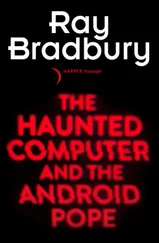The competitive sides of our personalities were never too deeply submerged either. On the second day of the trip, we came to a place in the river where the water was deep and smooth, and cliffs rose up above the river banks. Ken hollered: “Stop the boats! We’re going to go up there and jump off,” he went tearing up the cliff. Lots of people followed and started jumping into the river from the cliff. But when I got to the top, Ken and Roberta were still standing there, looking down.
Ken came over to me and said: “I’ve made a big mistake. How would you like to do me a favor, Doug? Why don’t we walk down to the boat? If you go with me, nobody will think anything of it.”
“We can jump off this. It’s not so bad,” I replied.
“Why don’t you take a look,” he said.
It did seem like a long way down, but everyone else was jumping off and surviving. By this time my sister Cathy had joined us. Cathy is not very afraid of water—when we were growing up in Iowa, she was voted outstanding swimmer in the state two years running. Furthermore, she is nine years younger than I am and was then still too young to have any sense of her own mortality. She was clearly ready to jump off the cliff.
I said to Ken, “Well, Cathy will take one of your hands and I’ll take the other, and I’ll grab Roberta’s hand and we’ll jump off together. What do you think?” “Okay,” he said. We linked hands and headed for the cliffs edge until Ken put on the brakes. “I’ll do it next time,” he said.
So Cathy and I jumped off. It was fun but not so much fun that we wanted to try it again, so we didn’t go back up. Eventually everybody jumped, but Ken and Roberta climbed back down. Ken said, “I think my reach exceeded my grasp. I pushed myself a little further than I was ready to handle.” It was rude to leave them up there like that. But it is a fair analogy to our business relationship. We are friends, but the competitive spirit is never too far away. I doubt that any of us would do anything that would harm any of the others, since their opinions of us are important. But we all like to win, and if the other falters, we aren’t likely to wait too long for him to catch up.
In the business arena, when Ken and Roberta came out with their low-priced word-processing program, Homeword, he called us to bet that it would displace Broderbund’s wordprocessing program, Bank Street Writer, on the charts. In fact, our vice president of sales and marketing at that time, Tom Measday (who is now president of Avant Garde), bet Ken $500 and lost it three weeks later when Bank Street Writer temporarily fell to the number two position behind Homeword on the Softsel chart.
But if Ken and Roberta weren’t gamblers at heart, there never would have been an On-Line Systems in the first place. They would still be in the San Fernando Valley, living off Ken’s earnings as a programmer, instead of residing in a mansion in the Sierra foothills, running their own software empire.
Ken was twenty-five and Roberta was twenty-six when they founded their company in 1980. They had married shortly after high school and had had the first of two children less than a year later; Ken went to a computer-programming school, found that he had a talent for it, and worked his way up through a series of programming jobs. By the late 1970s they were living in a tract house in the suburbs of Los Angeles. Roberta took care of their two sons, and Ken worked as a programmer.
Ken couldn’t have cared less about tiny hobbyist computers like the Altair. The company he worked for until 1979, Informatics, was the largest mainframe software company in the world. There, Ken had developed a reputation as a real wizard. Ken could debug huge programs, create new programming languages, or learn how to program a new language in a matter of days.
But Ken didn’ like working under anyone else. He quit Informatics in 1979 and became an independent software consultant, pulling in a very respectable $30,000 a year. Then Larry, Ken’s younger brother, bought an Apple and showed it to Ken. Compared with the truly powerful computers Ken was accustomed to programming, this was a pathetically puny toy. But fooling around with the machine’s limited capabilities was strangely addictive, and without really knowing why he was doing it, Ken bought his own Apple in January 1980. At the time, the $2000 he put out for the machine was a significant investment—close to every penny he had saved. Roberta was less than ecstatic. She suggested to Ken that he ought to spend some of his time thinking of a way to make some money with his new toy.
But while Ken was cooking up a scheme to create a FORTRAN compiler for the Apple, Roberta was doing her own kind of computational exploring. They had a terminal at home that was connected, via telephone lines, to a mainframe belonging to one of Ken’s clients. Ken had introduced his wife to a mainframe version of Adventure, and Roberta had quickly become addicted to it. She spent night after night working her way through the maze of caverns, drawing huge maps, and collecting clues. When she had used up all of the Adventure-type games available for the Apple (mostly Scott Adams creations) she was sorely disappointed. She started daydreaming about a truly challenging adventure game. Then she started planning one.
Roberta spent weeks plotting and planning. She had an idea about a game-puzzle-mystery that took place in a big house, full of mysterious locked rooms and secret passageways. She created plots and characters and mapped out the connections between the rooms. Of course, she had no idea how to turn her maps, character sketches, and plots into the kind of programming code that would make her adventure come alive on the Apple. She talked to Ken about doing the programming, but he was skeptical about her idea. He had a lot of other irons in the fire and didn’t think that working on an adventure game was likely to be worth his time.
He soon changed his mind when Roberta came up with an idea for a unique feature: Why not put some graphics on the screen to accompany the game’s text? Roberta had no idea whether or not it was even possible to put pictures on computer screens, but Ken looked into it and found a piece of hardware that would enable her to sketch a few primitive scenes to accompany her text. Ken started working with Apple assembly language. Within a month he had found a way to put the whole game and seventy illustrations on a floppy disk. It occurred to them that there might be a market for this game.
When, in early 1980, they had a demonstrable product, Ken took it to Dave Gordon of Programma, then the largest publisher of Apple software. Gordon claimed that he’d be able to sell at least 500 copies of the game each month and offered Ken a 25 percent royalty on a $12 wholesale price. Ken and Roberta decided that they would try to sell it themselves. If they couldn’t do any better than $3 per copy, then they could always go back to Programma. The Williamses took their program— Mystery House —to a few retail outlets around Los Angeles. Adventure games were enormously popular, and when the retailers saw the high-resolution graphics they were immediately enthusiastic. It looked as if they might actually make some money on this program.
By this time, Ken already had a company. He had called it On-Line Systems, thinking no doubt of the grand systems and applications programs he would be creating. It was a strange name, however, for a game company. They bought a box of one hundred blank disks and paid $200 for an ad in the May 1980 issue of a magazine called MICRO. Like Ed Roberts and the first Altair orders, they were totally unprepared for the flood of phone orders for Mystery House that started the day the magazine hit the stands. They made $11,000 that first month, $20,000 the next month, and by July their revenues were up to $30,000—about what Ken had been making in a year as a consultant!
Читать дальше










